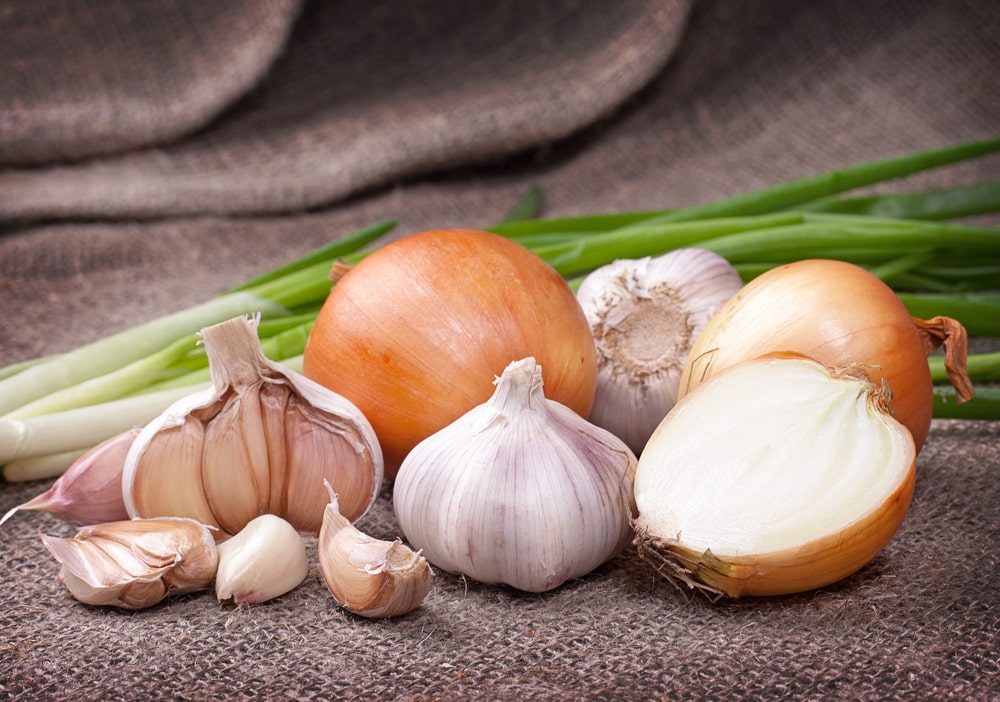I’m one of those people who believe that onions and garlic make everything taste better. If a recipe calls for half an onion, I figure adding the whole onion will make it better. Same with garlic. And since fall is a perfect time to plant onions and garlic—and we just got fresh garlic and onions for planting—here’s how to plant yours.
How to Plant Garlic
Garlic is easy to grow—needing only fertile well-draining soil and sun. To grow your own, choose heads from a garden center. Garlic from a grocery store may have been treated with sprouting inhibitors. Separate the head into individual cloves and plant, pointed end up, two inches deep and four to six inches apart early to mid-October.
After planting, mulch well for the winter. A loose fluffy mulch like pine needles or chopped leaves is especially good. Remove the mulch as soon as new growth begins in the spring.
When any bloom stalks begin to show, cut them back so energy will go back to the bulbs. Garlic is ready to harvest when the tops begin to brown—but have not completely died back—usually early to mid-summer. After harvesting, hang your bulbs in small bunches to dry or lay on screens. Do not wash the dirt off. After six weeks or so of curing, tops and roots can be trimmed back and dirty outer-skins removed.
How to Plant Onions
Plant onion sets two inches deep, four to six inches apart in mid-October. Like garlic, they prefer fertile soil so amending with fresh compost is helpful. Mulch as you would for garlic. You can pick them as “spring onions” whenever the tops are big enough around for your preference or leave then until the tops begin to yellow and bend over for slicing size onions.
All Alliums, including onions, garlic, shallots, chives, and leeks are rich in vitamins C and B6, potassium, and important phytonutrients. The American Institute of Cancer Research suggests that these phytonutrients may help prevent inflammation that can lead to cancer.
The health benefits are important but, even better, onions and garlic are delicious and, just in case you’re bothered by four-legged pests in your garden, critter-proof! Plant them around the outside of your cool-season veggies to help deter nosy nibblers.

